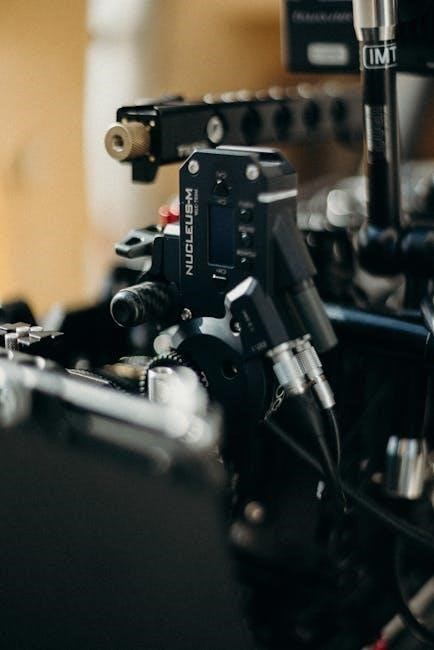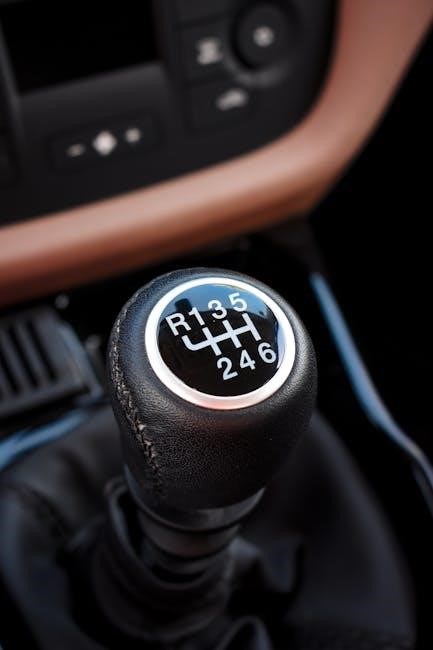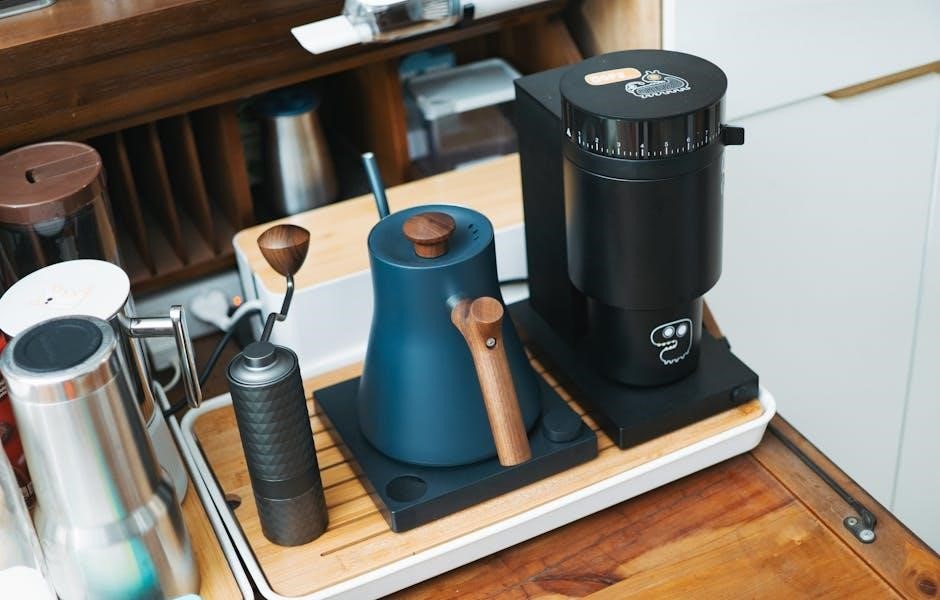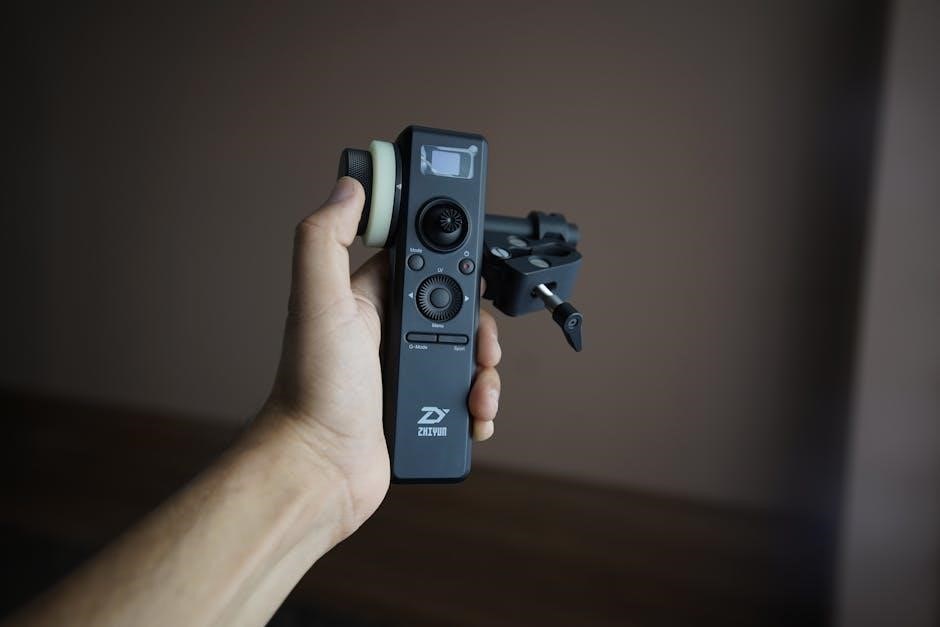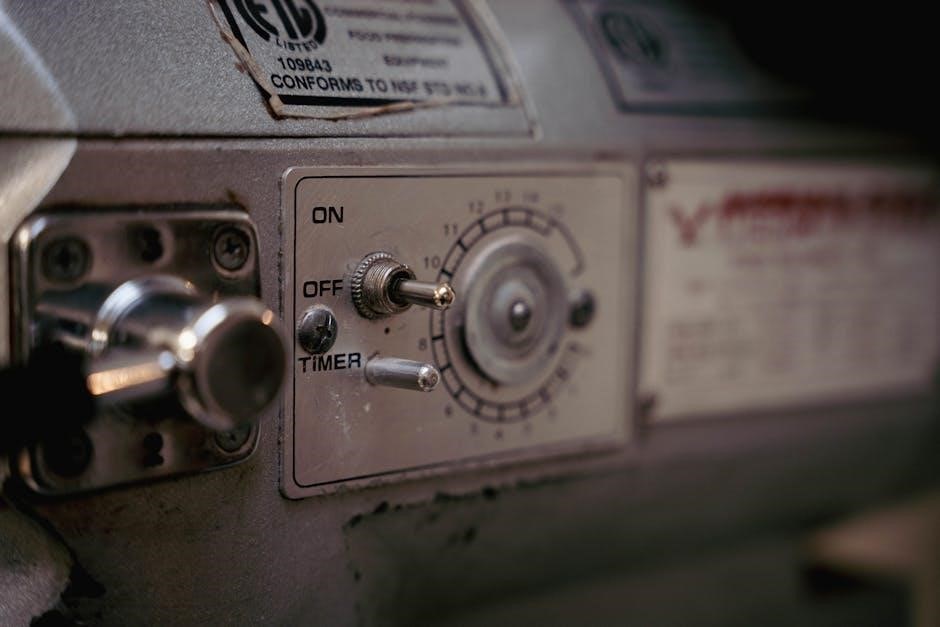Welcome to the Motorola CP100D manual, your comprehensive guide to understanding and operating this professional-grade digital two-way radio. This manual is essential for safe and effective use, covering key features, setup, and troubleshooting to ensure optimal performance in various work environments.
1.1 Overview of the Motorola CP100D Radio
The Motorola CP100D is a professional-grade digital two-way radio designed for efficient and reliable communication. Compact and lightweight, it offers advanced features like digital technology for clear audio and enhanced security. With a long-lasting battery and compatibility with Motorola Solutions’ accessories, it is ideal for various work environments. The radio ensures compliance with safety standards and regulations, providing a robust solution for professional communication needs while supporting seamless integration into existing systems.
1.2 Importance of Reading the Manual
Reading the Motorola CP100D manual is crucial for safe and effective use of the radio. It provides essential information on RF energy exposure, safety guidelines, and compliance with regulations. The manual also offers detailed instructions for programming, troubleshooting, and maintaining the device. By understanding the features and proper usage, users can optimize performance and ensure reliability in professional settings. Failure to follow the guidelines may result in non-compliance with safety standards or damage to the equipment. Always refer to the manual for accurate and up-to-date information.

Key Features of the Motorola CP100D
The Motorola CP100D offers advanced digital technology, a compact lightweight design, and enhanced communication capabilities, making it ideal for efficient and reliable professional-grade two-way radio use.
2.1 Digital Technology and Benefits
The Motorola CP100D leverages cutting-edge digital technology to deliver clear and reliable communication. Digital signals reduce static and interference, ensuring crisp audio quality. Advanced noise cancellation enhances voice clarity, while improved channel capacity supports more users. Digital encryption provides secure transmissions, protecting sensitive information. Additionally, the CP100D supports data applications like text messaging and GPS tracking, enabling efficient workforce management. These features make the CP100D a robust solution for professional communication needs, offering superior performance over analog systems.
2.2 Compact and Lightweight Design
The Motorola CP100D boasts a compact and lightweight design, making it easy to carry and use in various work environments. Weighing just 10.8 ounces, this radio is designed for comfort and portability. Its sleek dimensions allow for easy handling, while the durable materials ensure long-lasting performance. The lightweight construction reduces fatigue during extended use, making it ideal for professionals who need reliable communication without being weighed down. This design balances functionality and ergonomics, ensuring a seamless user experience.
2.3 Enhanced Communication Capabilities
The Motorola CP100D features enhanced communication capabilities designed to deliver clear and reliable voice transmission. With digital technology, it minimizes background noise and ensures crisp audio quality. The radio supports voice announcements, allowing users to identify channels without visual confirmation. Programmable buttons enable quick access to frequently used features, enhancing operational efficiency. Its advanced transmitter design, approved by Industry Canada, ensures compliance with regulatory standards while maintaining superior performance. These capabilities make the CP100D an ideal choice for professionals needing dependable communication in demanding environments.

Safety Guidelines and Precautions
Ensure safe usage by reading the RF Energy Exposure and Product Safety Guide. Follow all regulatory standards and guidelines for proper handling and operation of the device.
3.1 RF Energy Exposure and Safety
To ensure safe operation, adhere to RF energy exposure guidelines. Use only Motorola-approved antennas and accessories to maintain compliance with regulatory standards. Avoid direct exposure to the antenna during transmission. Always follow the safety precautions outlined in the provided guide to prevent potential health risks. Proper handling and usage are crucial for both device performance and user safety. Failure to comply may result in exposure exceeding acceptable limits. Keep the device away from sensitive equipment and follow all recommended safety measures diligently.
3.2 Compliance with Regulations and Standards
The Motorola CP100D is designed to comply with FCC and Industry Canada regulations, ensuring safe and reliable operation. The device meets or exceeds applicable standards for RF energy exposure and electromagnetic compatibility. Always use Motorola-approved antennas and accessories to maintain compliance. Unauthorized modifications or non-compliant accessories may violate regulations and void the warranty. Adherence to these standards ensures the radio operates safely and efficiently, aligning with legal and industry requirements for professional communication systems.

User Manual Structure and Content
This manual provides a comprehensive guide to the Motorola CP100D, covering essential topics like operation, features, and troubleshooting for efficient and safe use.
4.1 Sections of the User Guide
The Motorola CP100D user guide is organized into clear sections, including an overview of the radio, safety guidelines, installation instructions, programming steps, and troubleshooting tips. It also covers battery management, authorized accessories, and compliance information. Detailed diagrams and step-by-step instructions are provided to ensure easy understanding. Additionally, the guide includes a section on warranty terms and conditions, as well as tips for maintaining optimal performance. This structure makes it easy for users to navigate and find the information they need efficiently.
4.2 How to Navigate the Manual
The Motorola CP100D manual is designed for easy navigation, with clear sections and a logical structure. Use the table of contents to quickly locate specific topics, such as safety guidelines, installation steps, or troubleshooting tips. The manual is available in multiple languages, selectable via a dropdown menu. For efficient browsing, utilize the search function to find keywords or topics. Each section is concise, ensuring users can access the information they need without unnecessary complexity. This straightforward approach makes the manual user-friendly and accessible for all skill levels.

Installation and Setup
Proper installation and setup are crucial for optimal performance. Begin by attaching the antenna and installing the battery, following the provided instructions carefully for safety and functionality.
5.1 Attaching the Antenna
To attach the antenna to your Motorola CP100D, ensure the battery latch is in the unlock position. Align the antenna connector with the radio’s port, then twist gently until it clicks securely into place. This ensures proper connectivity and optimal signal strength. Always handle the antenna with care to avoid damage. Proper attachment is crucial for clear communication and reliable performance in all operational environments.
5.2 Battery Installation and Charging
Insert the compatible Motorola battery (e.g., PMNN4476) into the CP100D by aligning the connectors and gently pushing until it clicks. Use only Motorola-approved chargers to ensure safety and battery longevity. Avoid using unauthorized chargers, as they may damage the device. Charge the battery until the indicator shows a full charge, then unplug to prevent overcharging. Regularly clean the battery and radio contacts to maintain optimal performance. Proper charging and care extend the battery’s lifespan and ensure reliable operation of your Motorola CP100D radio.

Programming the Motorola CP100D
Program your Motorola CP100D using Motorola-approved software to customize settings, frequencies, and features for optimal performance. This ensures reliable communication tailored to your specific needs and environment.
6;1 Basic Programming Steps
Start by connecting the Motorola CP100D to your computer using a compatible programming cable. Open Motorola-approved software, select the radio model, and follow on-screen instructions. Choose desired settings like frequencies, channels, and digital features. Save configurations to the radio and test functionality. Always use Motorola Solutions software to ensure compatibility and compliance with safety standards. Proper programming ensures reliable communication tailored to your specific needs. Refer to the manual for detailed step-by-step guidance and troubleshooting tips.
6.2 Customizing Settings for Optimal Use
Customize your Motorola CP100D by adjusting settings to meet specific needs. Use Motorola-approved software to modify channel names, voice announcements, and display options. Enable or disable features like emergency alerts or Lone Worker for enhanced safety. Adjust volume, brightness, and keypad tones for personal preference. Program custom shortcuts for quick access to frequently used functions. Regularly update software to ensure optimal performance. Always refer to the manual for detailed customization guides and troubleshooting tips to maximize your radio’s functionality and user experience.

Battery and Charging Management
The Motorola CP100D uses 1750 mAh lithium-ion batteries. Charge with authorized Motorola chargers to ensure safety and battery longevity. Follow care tips for optimal performance always.
7.1 Compatible Batteries and Chargers
The Motorola CP100D is compatible with the PMNN4476 lithium-ion battery, offering reliable power. Use Motorola-approved chargers, such as the rapid quick charger, for safe charging. Ensure the battery is charged using authorized Motorola chargers to maintain performance and warranty compliance. Avoid using non-approved chargers, as they may damage the battery or void the warranty. Always refer to the manual for compatible accessories to ensure optimal functionality and longevity of your device.
7.2 Best Practices for Battery Longevity
To maximize battery life, avoid overcharging and full depletion. Store batteries in a cool, dry place at 40-80% charge for extended periods. Use only Motorola-approved chargers and avoid extreme temperatures. Clean battery terminals regularly and update firmware for optimal performance. Replace batteries showing signs of degradation. Following these guidelines ensures reliable operation and extends the lifespan of your Motorola CP100D battery.

Authorized Accessories
Motorola-approved accessories ensure safety, regulatory compliance, and optimal performance. Use only genuine Motorola chargers, batteries, and audio accessories to maintain your CP100D’s reliability and functionality.
8.1 Recommended Accessories for CP100D
For optimal performance, use Motorola-approved accessories like the PMNN4476 lithium-ion battery and compatible chargers. Recommended items include rapid quick chargers, headsets, and microphones. Ensure all accessories are genuine to maintain compliance and functionality. Avoid third-party products to prevent warranty issues and ensure safety. Motorola Solutions offers a range of compatible devices designed specifically for the CP100D, ensuring reliability and efficiency in professional settings.
8.2 Compatibility and Usage Guidelines
Ensure all accessories are Motorola-approved to maintain compatibility and performance. Use genuine batteries like the PMNN4476 and compatible chargers for optimal results. Avoid third-party products, as they may void the warranty or cause operational issues. Follow the user guide for proper installation and operation. Always comply with FCC and Industry Canada standards when using antennas or other accessories; Adhering to these guidelines ensures safe, reliable, and efficient communication with your Motorola CP100D radio.

Troubleshooting Common Issues
This section helps resolve common issues like static, lost connections, or keypad malfunctions. Follow step-by-step guides to restore functionality and ensure smooth communication.
9.1 Resolving Power and Connectivity Problems
Power issues may arise from drained batteries or faulty chargers. Ensure the battery is fully charged using an authorized Motorola charger. For connectivity problems, check antenna alignment and signal strength. Reset the device by turning it off and on. Verify channel settings and repeater connections. If issues persist, consult the manual or contact Motorola support for assistance. Regularly update software and use genuine accessories to maintain performance. Proper troubleshooting ensures reliable communication and optimal device functionality.
9.2 Addressing Audio and Reception Issues
Audio issues may stem from low volume, blocked speakers, or interference. Ensure the volume is set correctly and inspect for obstructions. For poor reception, check antenna alignment and move to areas with fewer obstructions. Resetting the device or reprogramming channels can often resolve connectivity problems. If issues persist, consult the manual or contact Motorola Solutions support for further assistance. Regular software updates and proper antenna maintenance are key to maintaining clear audio and reliable reception.
Maintenance and Repair
Regular cleaning and inspections ensure optimal performance. Use a soft cloth to wipe surfaces and avoid harsh chemicals. For repairs, contact authorized Motorola Solutions service centers.
10.1 Cleaning and Care Tips
To maintain your Motorola CP100D, use a soft, dry cloth to wipe down the exterior. Avoid harsh chemicals or liquids, as they may damage the device. For stubborn stains, dampen the cloth slightly but avoid moisture ingress. Regularly clean the antenna, screen, and ports to ensure optimal performance. Inspect for wear and tear, and replace any damaged parts promptly. Store the radio in a cool, dry place when not in use. Follow these care tips to extend the lifespan of your device.
10.2 Professional Servicing and Support
For complex repairs or maintenance, contact Motorola Solutions authorized service centers. Their professionals use genuine parts and tools to ensure compliance with safety and performance standards. Regular servicing by certified technicians is recommended to maintain warranty validity and optimal functionality. Additionally, Motorola offers dedicated support channels for troubleshooting and technical inquiries. Always use authorized services to avoid voiding the warranty and ensure reliable operation of your CP100D radio. Schedule professional check-ups to keep your device in peak condition.

Compliance and Regulatory Information
The Motorola CP100D complies with FCC and Industry Canada standards, ensuring safe and legal operation. Adhere to all regulatory guidelines and safety recommendations provided in the manual.
11.1 FCC and Industry Canada Compliance
The Motorola CP100D is fully compliant with FCC and Industry Canada regulations, ensuring safe and legal operation. The radio adheres to strict RF energy exposure limits and operates within approved frequency ranges. Users must follow all guidelines outlined in the manual to maintain compliance and avoid potential violations. Proper use of authorized antennas and accessories is essential to meet regulatory standards and ensure optimal performance. Always refer to the provided safety guide for detailed information on compliance and safe usage practices.
11.2 Warranty Terms and Conditions
The Motorola CP100D is backed by a limited warranty covering manufacturing defects in material and workmanship. The warranty period varies by region and product, typically covering the radio for a specified duration from the date of purchase. Damages resulting from misuse, unauthorized modifications, or failure to follow guidelines are not covered. For warranty claims, users must provide proof of purchase and contact Motorola Solutions or an authorized service provider. Proper registration and adherence to usage guidelines are essential to maintain warranty validity and ensure support.
The Motorola CP100D manual provides comprehensive guidance for mastering the radio’s features and operation. By following the instructions, users can ensure safe, efficient, and effective communication.
12.1 Summary of Key Points
The Motorola CP100D manual provides essential insights into the radio’s operation, safety, and maintenance. It highlights the importance of digital technology, compact design, and enhanced communication features. The guide emphasizes RF energy safety and regulatory compliance. Users are encouraged to follow programming and battery management tips for optimal performance. Additionally, it outlines troubleshooting steps and maintenance routines to extend the radio’s lifespan. By adhering to the manual’s instructions, users can maximize the CP100D’s potential for reliable and efficient communication in professional settings.
12.2 Final Tips for Effective Use
To maximize the performance of your Motorola CP100D, always follow safety guidelines and use authorized accessories. Regularly clean and maintain the radio to ensure reliability. Charge batteries with Motorola-approved chargers to prevent damage and extend lifespan. Familiarize yourself with programming options to customize settings for your needs. Keep the radio updated with the latest software for optimal functionality. Store the device in a dry, cool place when not in use. By adhering to these tips, you can ensure long-term efficiency and durability of your Motorola CP100D radio.

